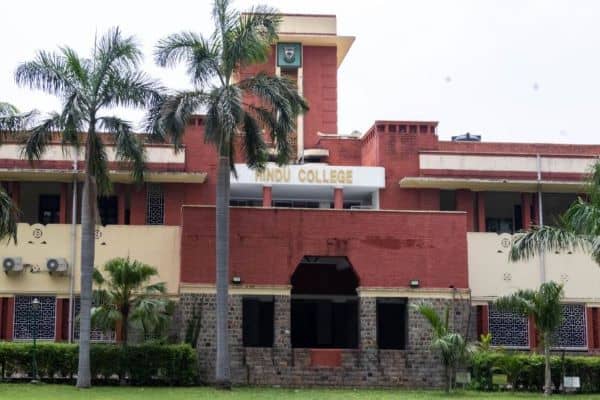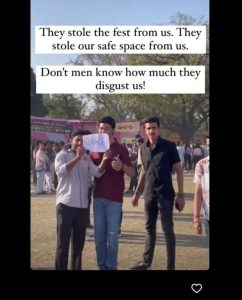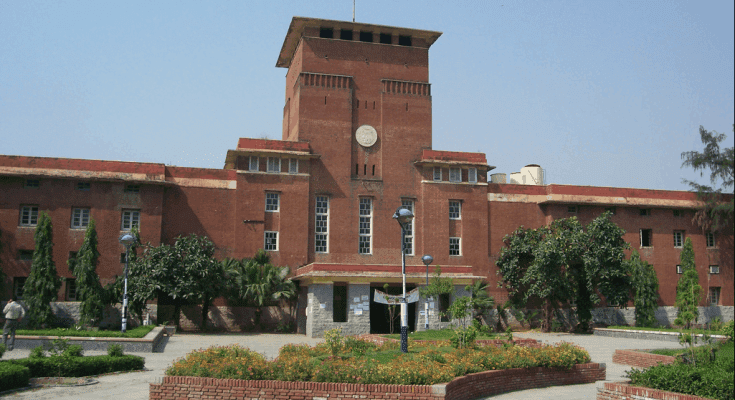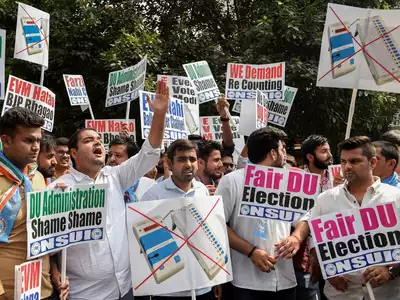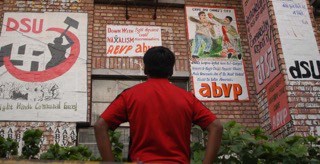The arrival of DUSU campaigning has heightened the tension in the University campus. Several reports of misconduct and threats have surfaced on the internet, posing a risk to the safety of regular students and residents.
On Saturday, September 16th, the AISA (All India Students’ Association) stated ‘outsiders’ had been spotted within the university campus and that a student had also been attacked. Aman Rawat, an activist for AISA, was allegedly confused for another candidate, Aditya Singh, and was abducted, threatened, and physically assaulted by some strangers, according to a video clip the organisation uploaded on social media.
Aman, an AISA activist and a law student, was approaching the traffic circle near Daulat Ram and Ramjas College when he was confronted by a group of unknown people. Aman can be seen in the video discussing the incident and mentioning how he was threatened, saying, ‘They recognized me as an ASIA Activist and started beating me, they warned me that AISA activists should stop campaigning or else they will face the same thing.’ He further said that those who attacked him realized they had confused him for Aditya Singh, the candidate for secretary from AISA. However, they continued to assault him.
He was brought to a Black SUV car that was covered in ABVP posters, and that’s how we found out who is behind this because we can’t identify these outsiders who are doing campaigning for ABVP in the campus.” – Anjali, AISA DU secretary.
Anjali adds that this is not the first time their student activists have faced threats. “Numerous incidences involving intimidation of students at various colleges have taken place, particularly of female candidates who receive texts even on Instagram.
Additionally, she emphasizes one of AISA’s key goals, which is to protect the gender minority and particularly prevent trespassing and harassment events that frequently happen at females’ institutions like IPCW and Miranda. One of their demands in this regard is for a gender sensitization community against sexual harassment. The student organization calls for a campus free from danger and fear.
While the organization has filed an official complaint in the nearby police station, they are dissatisfied with how the administration and police refuse to take the appropriate actions.
This incident is not the only one; a third-year student was seen in another social media video with what appeared to be a gun during campaigning at Kirrori Mal College. According to a statement made by the student group, neither the college security nor the police took any legal action against the offender.
According to The Indian Express, the principal of the institution, Dinesh Khattar, stated that the gun-like device was a lighter and was in the possession of the proctorial board. Additionally, he assured that the students will face harsh punishment.
AISA, however, asserts that the student is an ABVP member. Aiyesha Khan, the AISA candidate for president, states in a video released on their Instagram account that there has been an upsurge in these kind of incidents across the university’s campus and in the surrounding areas.
The campus has been hijacked by outsiders, and there have been cases of assault and intimidation since the beginning of the DUSU elections. While preaching about free and fair elections, the University and Delhi police refuse to take proper action.” – Ayeisha Khan in the Instagram video clip posted by AISA.
There are alleged violations of the election rules and outside involvement, according to numerous student groups. Several acts of violence were reported during the elections in 2019 as well. The student groups argue that the ABVP maintains musclemen to threaten their activists. On the other hand, the ABVP has denied these accusations.
The campus stays crowded and tense as the election approaches, with roads covered in pamphlets and candidates passing in convoys. With the increase in these instances, there is growing concern about student safety, particularly for female students, and the security of women-only spaces.
In all, many groups demand quick and strong action against such mistreatment and violence in the university, as well as an election free of muscle and money.
Additional Source – https://www.newsclick.in/delhi-university-student-activist-explains-why-dusu-election-matters
Image Credits – Google Images
Priya Agrawal


